A Journey to Escape the Heat: A 2013 Summer Trip through Finland, Sweden, Norway, and Denmark
This travelogue was updated in 2020. Please note that operating hours can vary depending on the season and that there may be regular closure days as well as closures on specific holidays such as Christmas, Epiphany, and New Year's Day. Therefore, when planning your schedule, be sure to check Google Maps or the official websites directly.
When I chose Northern Europe as my first European travel destination and decided to visit Norway, the fjord scenery was the thing I most wanted to see. Therefore, my itinerary in Norway focuses on fjord tours rather than city sightseeing. Norway offers several fjord tour routes, and I decided to travel the Sogne Fjord route, which is the most convenient for starting and ending in Oslo.
If I get the chance in the future, I would love to explore the route along the Scandinavian Peninsula’s coastline all the way to Tromsø. For details on the itinerary to travel Sogne Fjord or information about the Nutshell Pass, please check out the post at the following link!
Sogne Fjord Tour Website
First Stop: Voss
After an hour-long train ride from Bergen, you will arrive at Voss. When you get off at Voss train station, you'll find a bus stop nearby that takes you to Gudvangen. Voss is located in the heart of the Sogne Fjord region of Norway and is one of the largest municipalities in Hordaland county, with a population of around 14,000. The town is bustling with people touring the fjords in the summer and skiing in the winter. Here, you can experience activities such as rafting, kayaking tours, mountain horseback riding, fishing, paragliding, skydiving, golf, and various water sports.
In addition to leisure activities, Voss is also renowned for its music, folk art, crafts, and traditional food. The town hosts events like the Voss Jazz Festival and the Osafestival, and it is also famous for traditional dishes like smalahove (salted sheep's head), which delight many visitors.
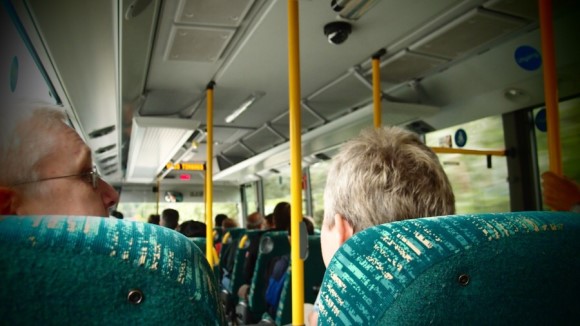
Since I didn't plan to engage in any leisure sports, I took a bus directly from Voss to Gudvangen. The route from Voss to Gudvangen involves a descent along winding valley roads for about an hour, as Voss is situated at a higher altitude and Gudvangen at a lower one. As you continue down the twisting roads, you'll eventually see a small village nestled in the valley, signaling that you're almost there.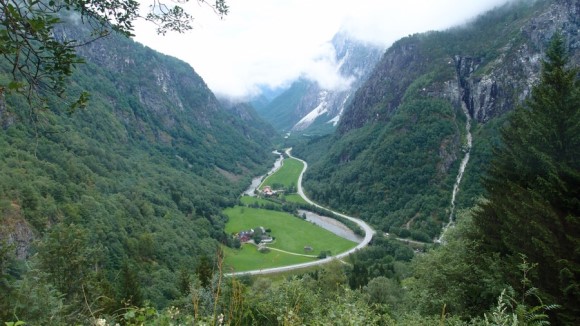
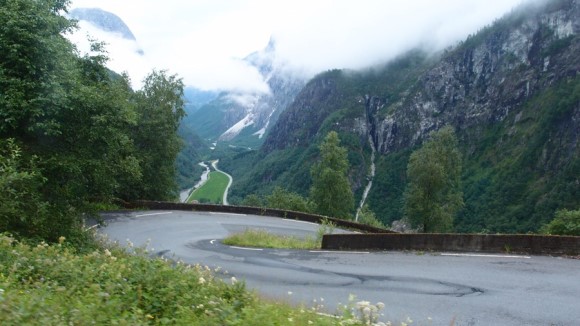
Second Stop: Gudvangen
Gudvangen has been a UNESCO World Heritage Site since 2005. The name means "the field of the gods by the water." This small village, with about 120 residents, has been attracting tourists for over a century. As early as the late 19th century, cruise ships from other regions began arriving in Gudvangen. The locals responded by building hotels and creating steep paths to facilitate the movement of visitors.
Emperor Wilhelm II of Germany visited Gudvangen multiple times on his private yacht and traveled to Stalheim like other tourists. The Nærøydalselva River, where salmon were plentiful, played a significant role in the local tourism industry.
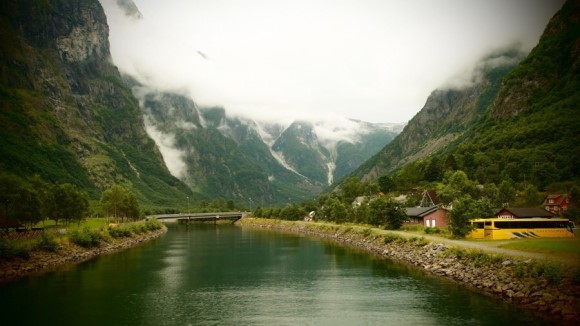
With some time to spare before boarding the cruise ship, I took a walk around the pier area. The weather was nice when I left Bergen, but upon arriving in Gudvangen, clouds draped over the mountains, signaling impending rain. As expected, it started raining just as the cruise ship was about to depart, so I spent most of the journey inside the ship and couldn't enjoy the scenery.
However, to counter the bad weather, there are outdoor cameras on the ship broadcasting the views in real-time on indoor TVs, allowing passengers to still appreciate the landscape despite the rain.
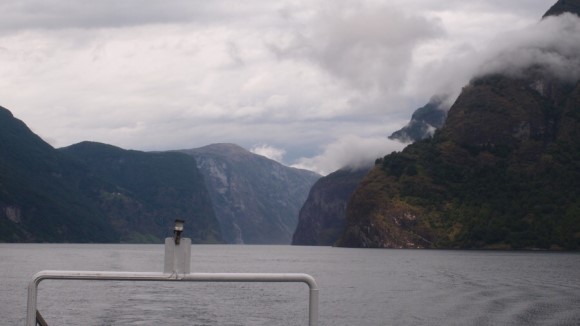
From Gudvangen, the cruise takes you through a stunning U-shaped valley formed by glacial erosion. Typically, when a river erodes its bed and deposits sediments, a V-shaped valley is formed with a deep central channel. However, in the case of the U-shaped valley, the sides of the riverbed were eroded by the passage of multiple glaciers. As these glaciers moved, they scraped along the valley walls, creating a broader, U-shaped profile instead of a deep central channel.
This U-shaped valley is a classic example of glacial topography that is often covered in middle and high school geography or science textbooks. When I first learned about U-shaped valleys, I mistakenly thought that a single large glacier carving its way down the river created this shape. In reality, it is the result of numerous glaciers moving together, eroding the valley walls over time. Seeing it in person, I realized that experiencing this geography firsthand is far more impactful than any description or diagram in a textbook.
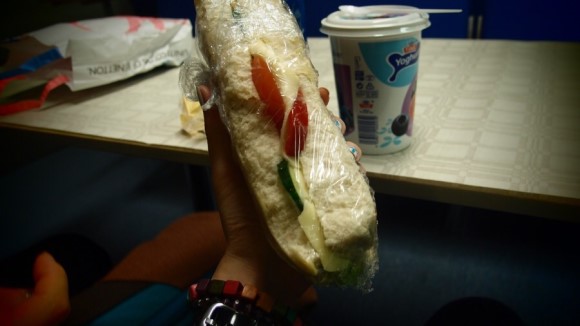
The ferry ride is quite long, so if your journey coincides with mealtime, make sure to bring lunch on board. While sandwiches and drinks are available for purchase on the ferry, I had snacks from a large supermarket in Bergen and bought a salmon sandwich on the ferry. The bread was a baguette, which was quite tough and left my jaw feeling sore.
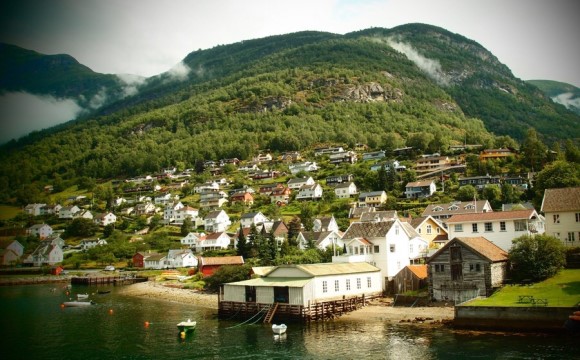
The indoor deck is on a lower level without windows, so you can't see outside directly. When I checked the weather on the monitor, it looked like the rain had eased, so I went outside to take some photos. The quaint riverside villages with their clustered houses looked very peaceful.
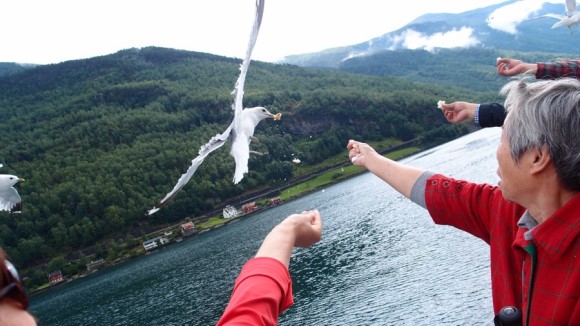
The tranquility didn't last long. Suddenly, a dynamic scene unfolded on the deck. A group of Chinese tourists came up, holding their snacks and bread high in the air. Seagulls, apparently accustomed to this, swooped in to snatch the food from their hands. Imagine people lined up along the railing, holding out snacks, with seagulls diving at them. The deck quickly turned into a bustling market scene, filled with the sound of laughter. Although the peace was short-lived, by the time we disembarked, the rain clouds had completely cleared, allowing us to walk comfortably.
Third Stop: Flåm
Flåm is a village with about 400 residents, known for being the starting point of the Flåm Railway and hosting one of Norway's most popular cruise ship docks. In the 1980s, most of Flåm's inhabitants were farmers, but today, the majority work in tourism or the railway industry.
The origins of Flåm's thriving tourism industry date back to the late 19th century when British tourists began coming to fish along the Flåm River. This influx of visitors laid the foundation for building hotels and welcoming tourists who traveled by carriage to admire the picturesque scenery.
When the Bergen Railway opened in 1909, Flåm became a crucial junction, transporting passengers traveling between Oslo and Bergen via train and fjord steamships, and facilitating the transport of mail and cargo.
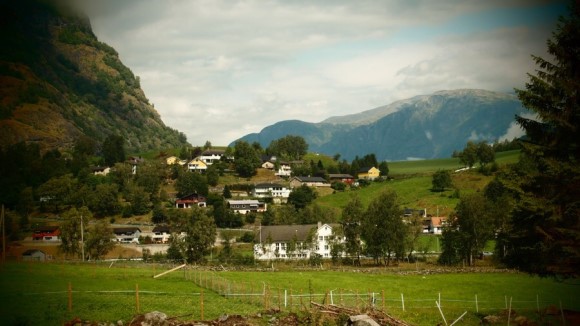
In Flåm, you can explore the area by following various walking trails or by taking a mini train ride around the village. Many visitors also choose to rent bicycles to get around. Regardless of how you decide to travel, both tourists and locals alike greet each other warmly with waves and smiles when they cross paths.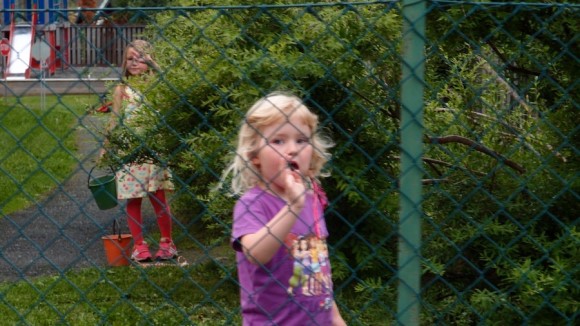
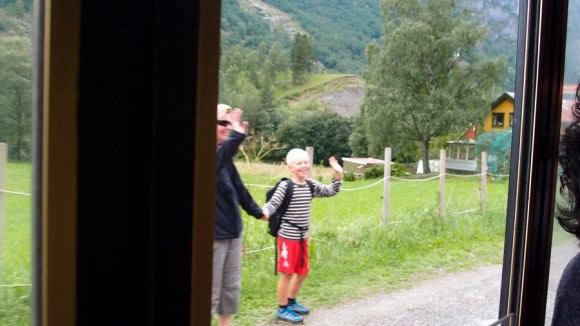
During one of the walking tours, I came across the Railway Museum, so I decided to take a look. The museum showcases the history of the Norwegian State Railways (NSB), including the famous Flåm Railway. There were model trains, actual train carriages, uniforms worn by railway staff, and numerous old photographs, providing a fascinating glimpse into the railway's past.
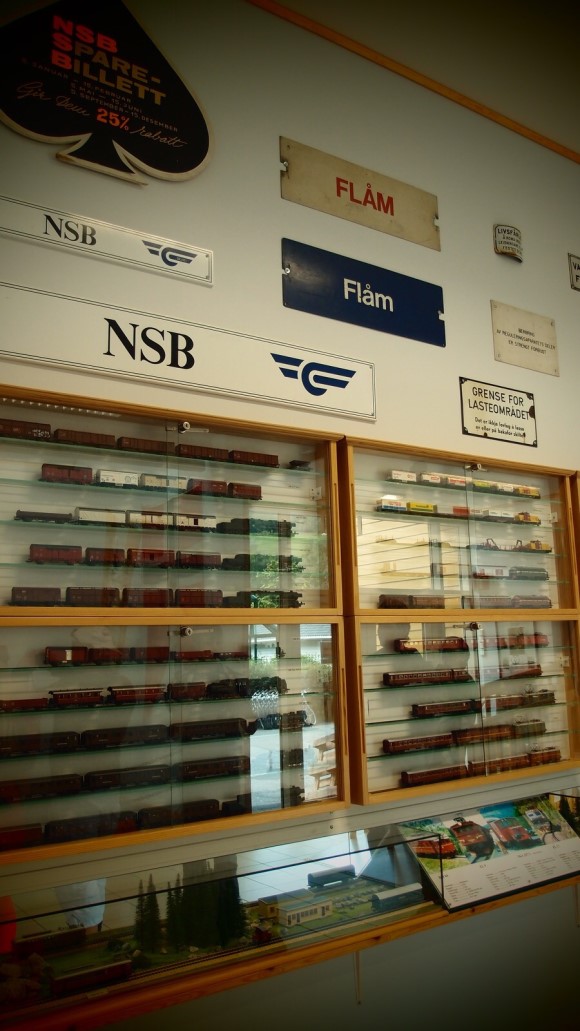
After exploring Flåm, I boarded the mountain train to Myrdal, the final destination of the Sognefjord tour. The train ride is a scenic journey through the mountainous terrain, with tracks laid around high-altitude mountains. The train moves slowly, providing ample time to soak in the stunning fjord landscapes. Seats on the outer side of the train are popular for their better views, so they tend to fill up quickly. This part of the journey offers a perfect opportunity to capture the last glimpses of the beautiful fjord scenery.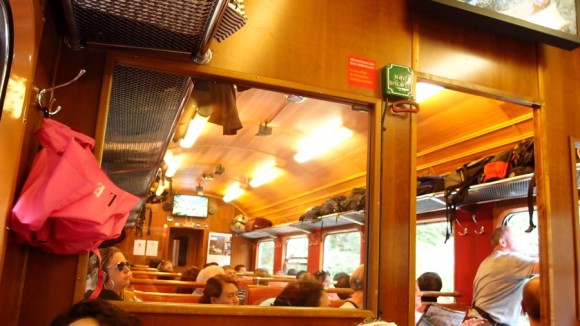
Fourth Stop: Myrdal
Myrdal is another terminus of the Flåm Railway, accessible only by train. It is situated between the two tunnels of the Bergen Railway: the Gravahals Tunnel and the Vatnahals Tunnel. This area features a few mountain lodges and hotels, but it is not connected by road. Myrdal serves as a transfer station where most passengers, who took the Flåm Railway for fjord sightseeing, switch to trains heading to Bergen or Oslo.
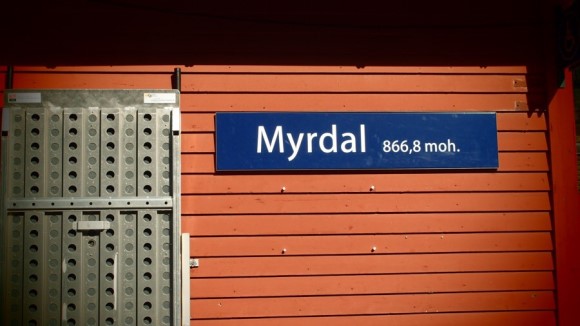
In Myrdal, I didn't have much time to venture far. Located at an altitude of 866 meters, I found myself at a café next to the Myrdal train station, sipping a hot Americano—something I would never order in Korea, where I’m a steadfast member of the "Iced Coffee Only" club. But after spending most of the day outdoors and with the cool mountain air, a warm drink felt just right. Some travelers were renting bicycles to explore further. It was heartening to see people of all ages enjoying the Sogne Fjord in their own unique ways.
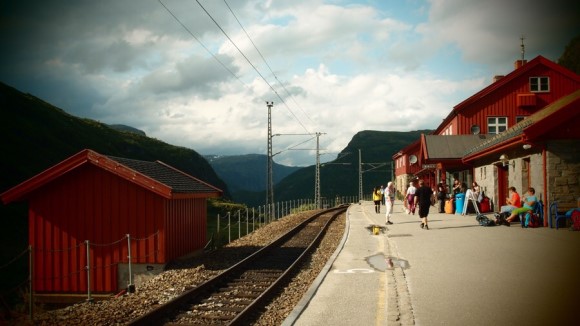
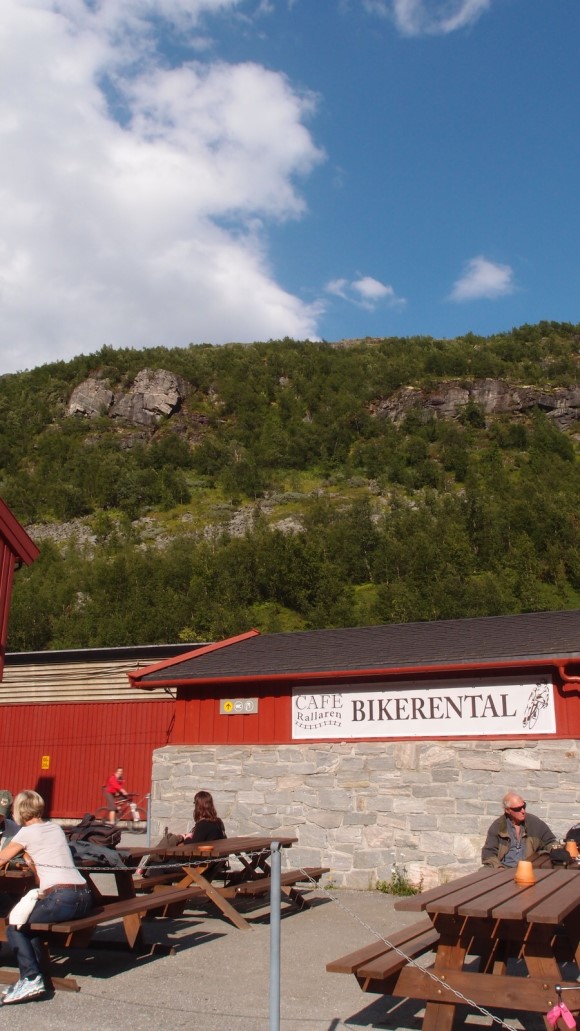
I had barely finished my coffee when the train to Oslo arrived. Despite my desire to linger in Myrdal, explore the town, and enjoy my warm coffee while gazing at the eternal snow on the distant mountain peaks, I knew I had to catch this train to arrive in Oslo by 10 PM. Reluctantly, I pulled myself from my seat and boarded the train to Oslo.
As I reflected on the journey, I realized I had experienced a stunning array of landscapes and completed every planned stop on my Sogne Fjord tour. Yet, an inexplicable sense of longing lingered. Perhaps it was the brief yet enchanting stops, the untasted warm coffee, or the snowy peaks left unseen. Whatever it was, it left me with a sweet anticipation for the next adventure.
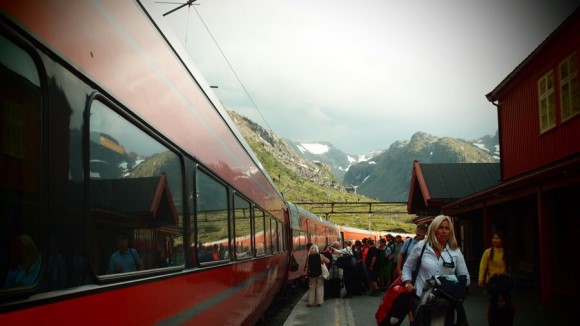
Feeling a bit melancholic, I decided to soak in the scenery until the sun set during the long train journey. The Sogne Fjord tour from Voss to Myrdal took about half a day, often spent outdoors. The weather was unpredictable, with sudden rain and significant temperature changes due to the high altitudes. Even in summer, it's advisable to bring a waterproof windbreaker or a light umbrella to stay comfortable and dry.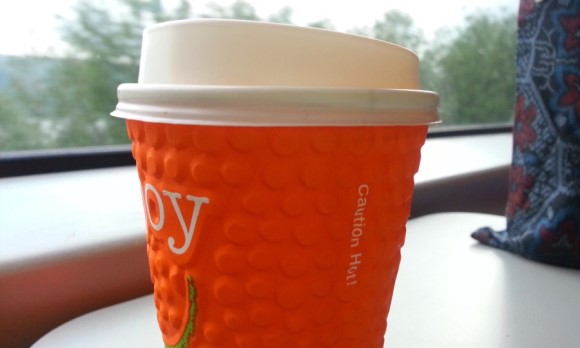
As I contemplated the ancient glaciers that have carved out deep and wide rivers, created sharp peaks, and formed perennial snowfields from countless falling snowflakes, I realized how fleeting a human life is in comparison. The immense passage of geological time made me reflect on how our existence is but a brief moment in the grand timeline of the Earth.
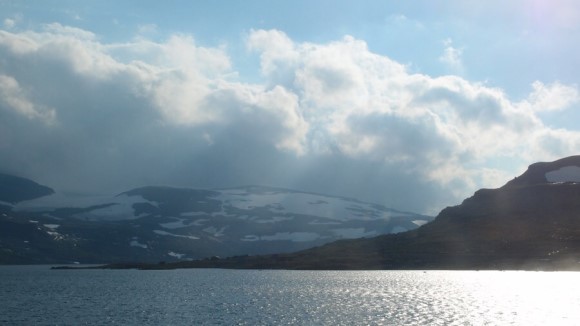
I'm not sure when I'll get the chance, but next time, I'd love to take a fjord tour in the Tromsø area. I'm curious about the midnight sun, where the sun never sets, and I'd also love to see the Northern Lights. It's a pity that I can't experience both phenomena at the same time!

댓글
댓글 쓰기